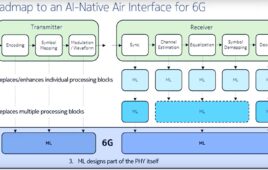One of the most profound quotes that have resonated throughout history was said by General William Tecumseh Sherman.
“War is hell.”
While militaristic conflicts have constantly started and ended throughout humanity’s existence, the weapons, technologies, and methods in which battles are waged have evolved over time. In the 21st century, we’re seeing warfare becoming more digital as militaries are beginning to rely more on electronics and cyber tactics over manpower. The advancements have created a cyberspace warfront that’s becoming just as meaningful as any sea, air, or land-based battleground.
Defense contracting company Raytheon will be using the upcoming 2017 Paris Air Show (runs from June 19-25) to display some its latest technologies that pertain to the digital shift occurring in how warfare is waged. The US-based firm is primarily displaying defensive and countermeasure devices like improved microprocessors for protecting US and allied smart weapons, radars, and networks that thwart cyber threats.
According to Raytheon, future militaries will primarily rely on integrated automation technology that utilize sensors for surveillance, data sharing, gaining intel, combating and monitoring hostile threats, and making faster decisions that ensure weapons (like advanced missiles) become an effective part of their defense arrays.
Having said that, the innovative advancements being made on the battlefield apparently go both ways. One issue that could arise from these circumstances is terroristic or paramilitary factions launching cyberattacks or deploying armed drones, which in turn could destroy artillery. These hostile groups could then utilize the battleground’s terrain topography to elude retaliatory attacks in the form of airstrikes and other artillery.
One of the ways Raytheon has approached this matter is addressing the issue of processing speed, and are developing a three-dimensional integrated circuit with stacked silicon wafers. These components vertically connect for a smaller footprint by orders of magnitude, faster processing speeds, low power consumption, and stronger protection against tactics like reverse engineering. As a result, advanced missile systems capable of operating in a network with smaller radars could locate, track, and eliminate smaller concealed targets. The defense contracting firm believes these technologies will make it possible to track and identify targets immersed in deep foliage or other cover over the next few years.
Another defensive approach to protecting the technology waged in cyber warfare involved mounting infrared cameras on autonomous aircraft, or high-powered active-array radars on special mission surveillance planes integrated into a network, which could be conditioned to protect those avian constructs from being cyber breaches. As a result, aircraft crews or battlefield officers can operate without interference.
Another approach imposed by Raytheon are signal jammers used to distort attackers by uncovering and combating hostile jamming attempts through algorithms to implement responses that are faster than humans. At the Paris Air Show, one of the systems Raytheon will display is the Coyote Unmanned Airborne System, which can be deployed in a swarm-like fashion and move in formation by utilizing autonomous networking to trigger strikes against mobile targets.



